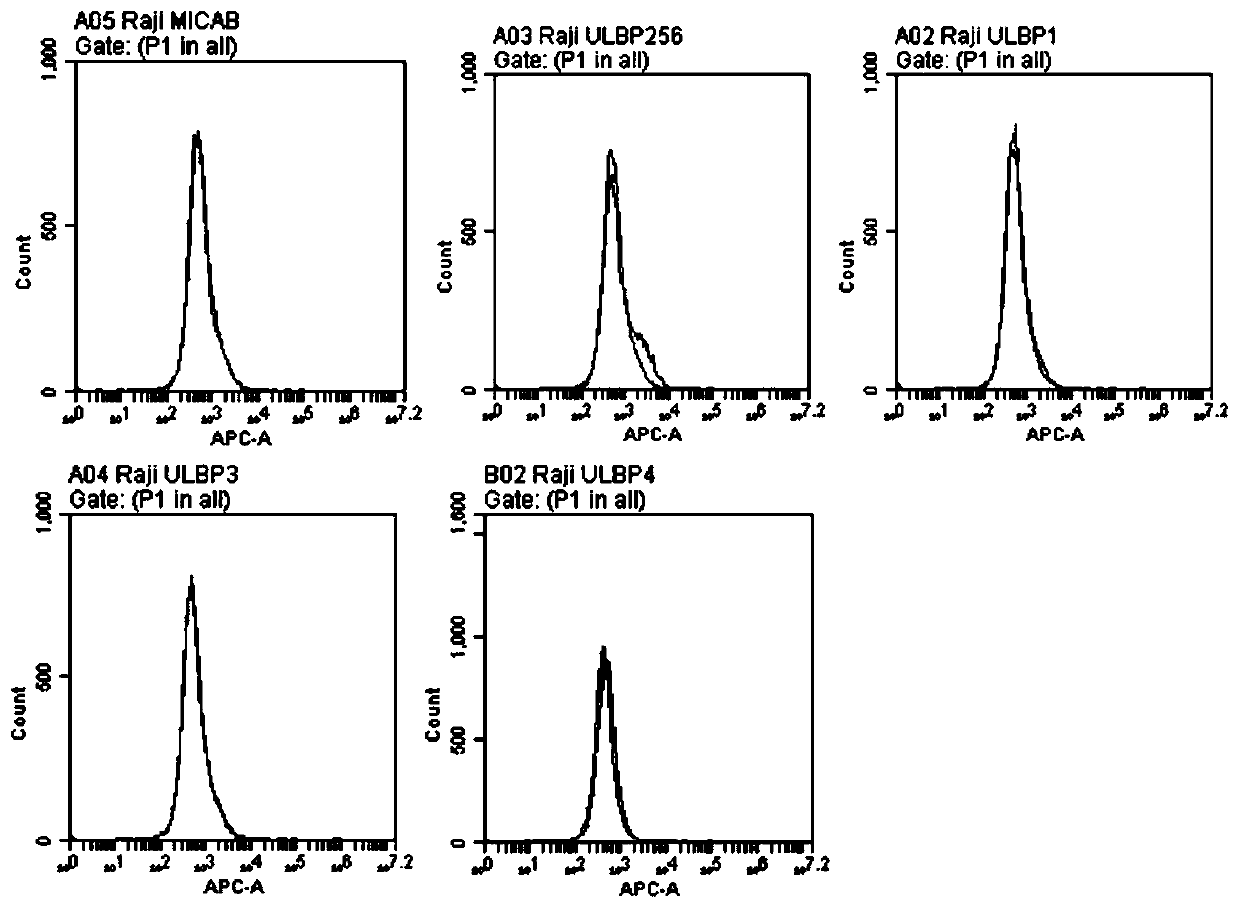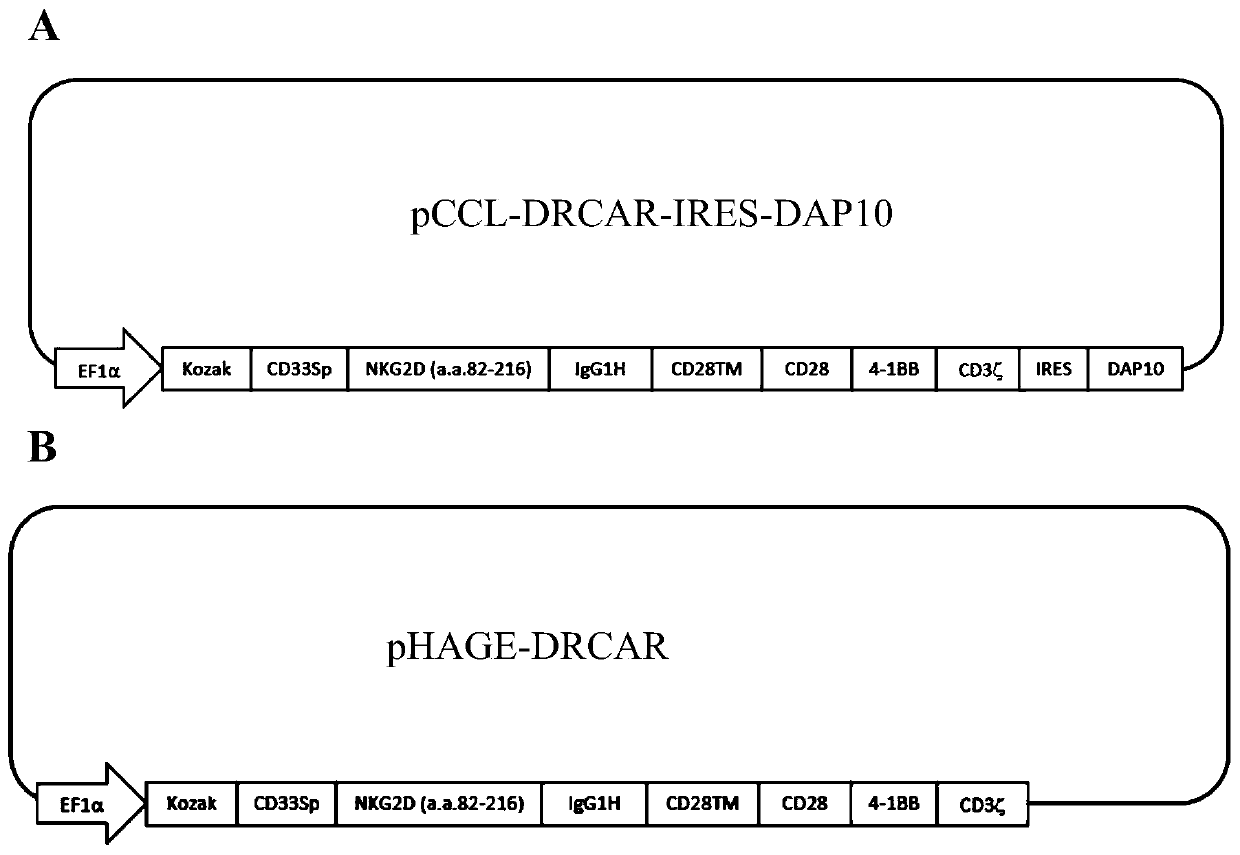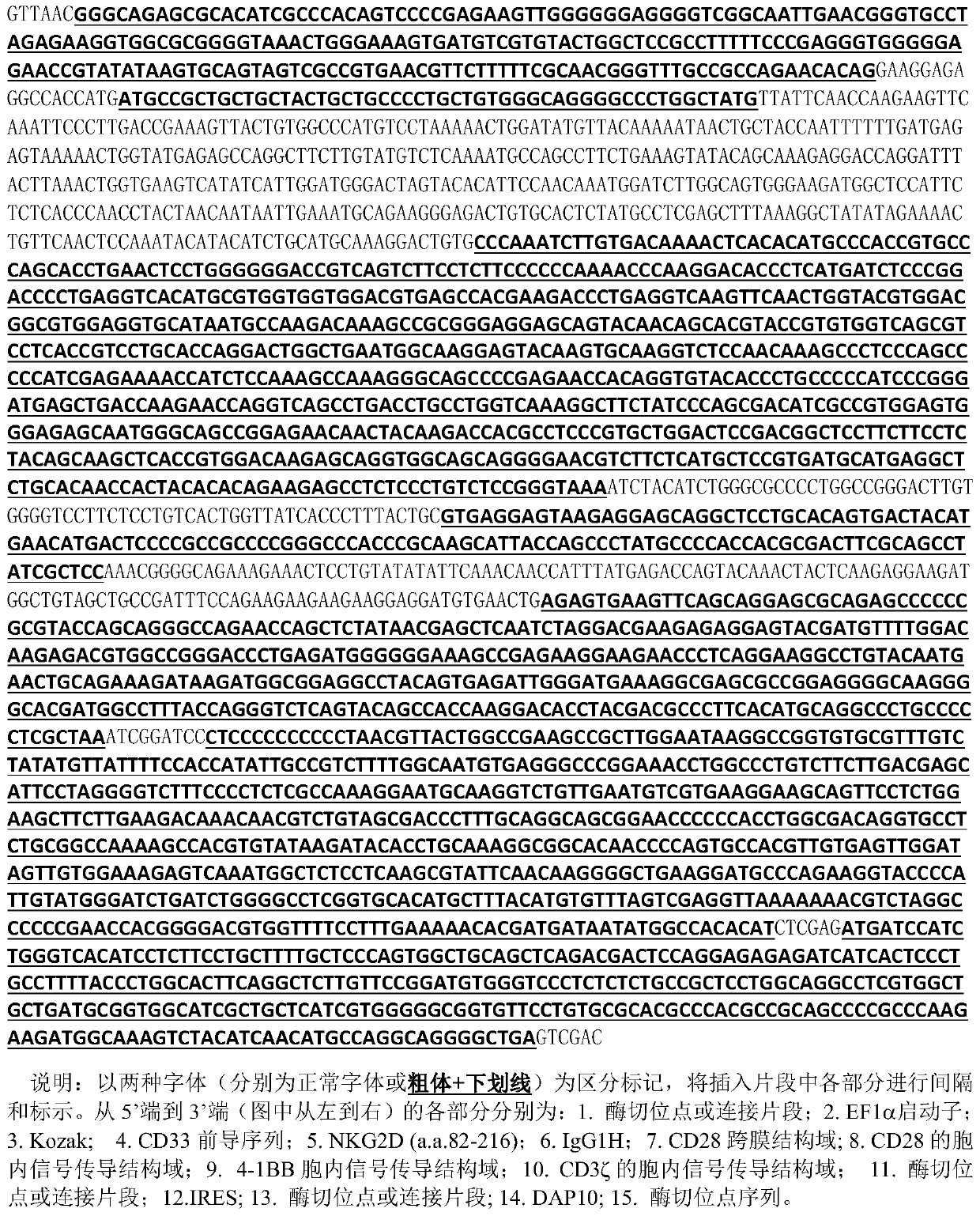Chimeric antigen receptor and method for treating liver cancer with same
A chimeric antigen receptor and antigen technology, applied in the field of immunology and medicine, can solve the problems that systemic chemotherapy has not been particularly effective, and advanced or recurrent liver cancer is not very effective
- Summary
- Abstract
- Description
- Claims
- Application Information
AI Technical Summary
Problems solved by technology
Method used
Image
Examples
Embodiment 2
[0107] Example 2 Expression of NKG2D ligands on various cancer cell lines
[0108] The expression of NKG2D ligands (human MICA / B and human ULBP1-ULBP6) was detected on different cancer cell lines to determine whether the CAR with NKG2D as the antigenic domain could be used to kill these cell lines.
[0109] To detect human MICA / B, 1×10 6 Each cell to be tested was resuspended in 0.5ml PBS buffer and treated with monoclonal mouse anti-human MICA / B (R&D Cat#MAB13001), followed by biotinylated goat anti-mouse IgG (H+L) and streptavidin Primer-APC staining.
[0110] To detect human ULBP2 / 5 / 6, mix 1×10 6 Each cell to be tested was resuspended in 0.5ml PBS buffer and treated with monoclonal mouse anti-human ULBP2 / 5 / 6 (R&D Cat#MAB1298), followed by biotinylated goat anti-mouse IgG(H+L) and streptavidin Avidin-APC staining.
[0111] To detect human ULBP1, 1×10 6 Each cell to be tested was resuspended in 0.5ml PBS buffer and treated with monoclonal mouse anti-human ULBP1 (R&D Cat#...
Embodiment 3
[0118] Example 3 Construction of a lentiviral vector expressing DRCAR
[0119] 1. Construction of pCCL-DRCAR-IRES-DAP10
[0120] pCCL-DRCAR-IRES-DAP10 has as figure 2 The structure shown in A. pCCL-DRCAR-IRES-DAP10 was constructed by the following method.
[0121] Synthetic nucleotide sequences such as image 3 Nucleic acid inserts encoding DRCAR and DAP10 are indicated. The insert fragment includes from the 5' end to the 3' end: 1. HpaI restriction site; 2. EF1α promoter; 3. Kozak; 4. CD33 leader sequence; 5. NKG2D a.a.82-216 fragment; IgG1H in the hinge region; 7. CD28 transmembrane domain; 8. CD28 intracellular signaling domain; 9.4-1BB intracellular signaling domain; 10. CD3ζ intracellular signaling domain; 11. connecting fragment; 12. IRES; 13. Junction fragment; 14. DAP10; 15. Sal I restriction site.
[0122] The above insert fragment and plasmid Pax5 (Addgene, plasmid #35003) were double-digested with restriction endonucleases HpaI and SalI, and the digested prod...
Embodiment 4
[0131] Example 4 DRCAR-T cells kill cancer cells in vitro
[0132] According to the method described in Example 1, T cells were extracted and obtained from human PBMC. Then, the lentivirus containing pCCL-DRCAR-IRES-DAP10 prepared in Example 3 was used to transfect T cells.
[0133] Cytotoxicity assays were performed according to the method described in Example 1 to examine the specific cytotoxic effects of DRCAR-expressing T cells on various tumor cells. Among them, T cells containing pCCL-DRCAR-IRES-DAP10 and T cells not transfected with lentivirus were used as effector cells, and 21 kinds of cancer cells were used as target cells.
[0134] A Raji cell line not expressing NKG2D ligand was used as a negative control.
[0135] The result is as Figure 7 (a)- Figure 7 As shown in (c), under the same experimental conditions, compared with normal T cells without DRCAR, T cells expressing DRCAR were able to induce significantly more target tumor cell death. The tumor cells i...
PUM
 Login to View More
Login to View More Abstract
Description
Claims
Application Information
 Login to View More
Login to View More - R&D Engineer
- R&D Manager
- IP Professional
- Industry Leading Data Capabilities
- Powerful AI technology
- Patent DNA Extraction
Browse by: Latest US Patents, China's latest patents, Technical Efficacy Thesaurus, Application Domain, Technology Topic, Popular Technical Reports.
© 2024 PatSnap. All rights reserved.Legal|Privacy policy|Modern Slavery Act Transparency Statement|Sitemap|About US| Contact US: help@patsnap.com










